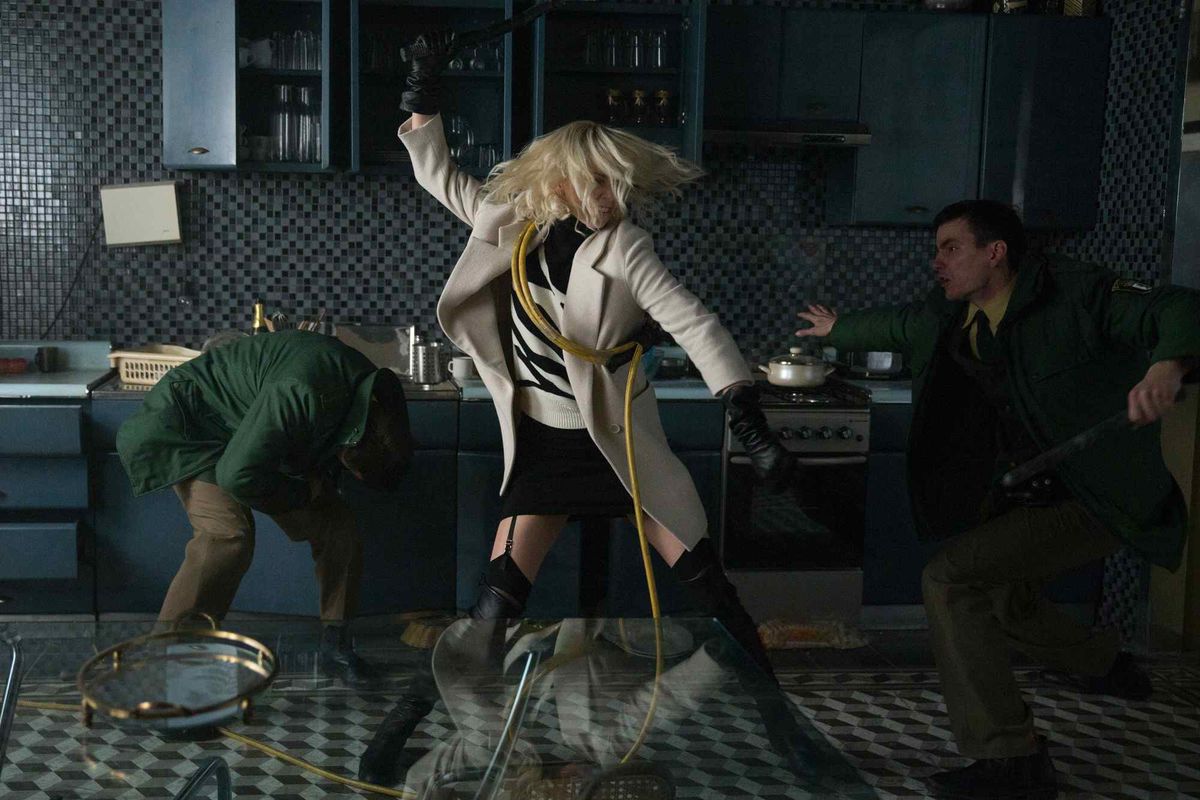The Coldest City, written by Anthony Johnston and illustrated by Sam Hart, follows MI6 agent Lorraine as she’s sent to Berlin to retrieve a list of spies in the days before the Berlin Wall falls. It’s a great premise but this graphic novel does very little with it.

Too much of The Coldest City feels like it was conceived as a screenplay and then changed into a comic to make it an easier pitch to Hollywood. Johnston has good ideas here but the twists and turns don’t offer anything unexpected. The characters feel more like sketches than actual people. Lorraine has the requisite feisty attitude but I never really felt she came to life. The other spies she encounters are all fairly indistinguishable from each other.
The art doesn’t really feel engaged with the story and while I understand what the aesthetic Hart is going for, his characters aren’t distinctive and there’s not a good sense of time or place. Panel layouts are generally uninteresting — usually either in a two-by-two grid or four panels stacked on top of each other. The action sequences are extremely static. I find it hard to blame Hart for any of this because I imagine this was just a work-for-hire job and I don’t feel like Johnston gave him much to work with.
Given how much The Coldest City is basically a nothing of a graphic novel, it’s surprising how much stylishness Atomic Blonde (2017, directed by David Leitch) brings as an adaptation. This isn’t high art by any means, but Charlize Theron’s sexy fierceness as Lorraine and James McAvoy’s dangerous allure as David Percival give this movie a great amount of energy.
The production design is cold blues and Lorraine’s wardrobe is gorgeous black and white that sets off her bleached blonde hair. If nothing else, this movie looks great and everyone involved knows it looks great.
Leitch, who was an uncredited co-directed John Wick, pushes the action of the story to the front. It’s fun to watch Theron beat people up, of course, but Leitch knows his strength. The ’80s soundtrack is great, even if some of it is a bit obvious. The characters are still a bit thin, but both Theron and McAvoy inhabit two people who are used to begin guarded and not trusting anyone, so it works. Genderflipping the French spy/love interest may seem like an attempt to appeal to the straight male gaze with a lesbian sex scene, but Sofia Boutella is sweet as a young woman who is out of her depth. Lorraine is also protective of her, which does provide some needed character development. (And it does give the movie another character who’s a woman.)
Probably the highlight of the movie is the one-take stairwell fight which never stops being amazing. In the graphic novel, this sequence is four pages and barely memorable (I went to look at it again after rewatching the movie and I was surprised to see that any of it was actually in the book). Theron’s Lorraine shoots, kicks, punches, hits and stabs her way through an apartment building trying to protect an asset. It’s a long fight and Theron looks notably — and realistically — exhausted by the end. It’s so incredibly physical.
Atomic Blonde makes a few changes to the story, but the story matters little here. There are some double crosses and secrets and it’s a spy movie. No one is really watching for that, though, but the movie does what it can with the thinness of the story. The filmmakers seem to use that to this movie’s advantage — the plot is just the connections between the set pieces. I actually appreciated that.
I have watched Atomic Blonde a few times because it’s fun to have on in the background — the kind of movie to catch bits of when looking up from doing other things. But I do have to say I tend to enjoy it more each time I watch it. I can’t say that about the graphic novel, which I’m never going to read again.

